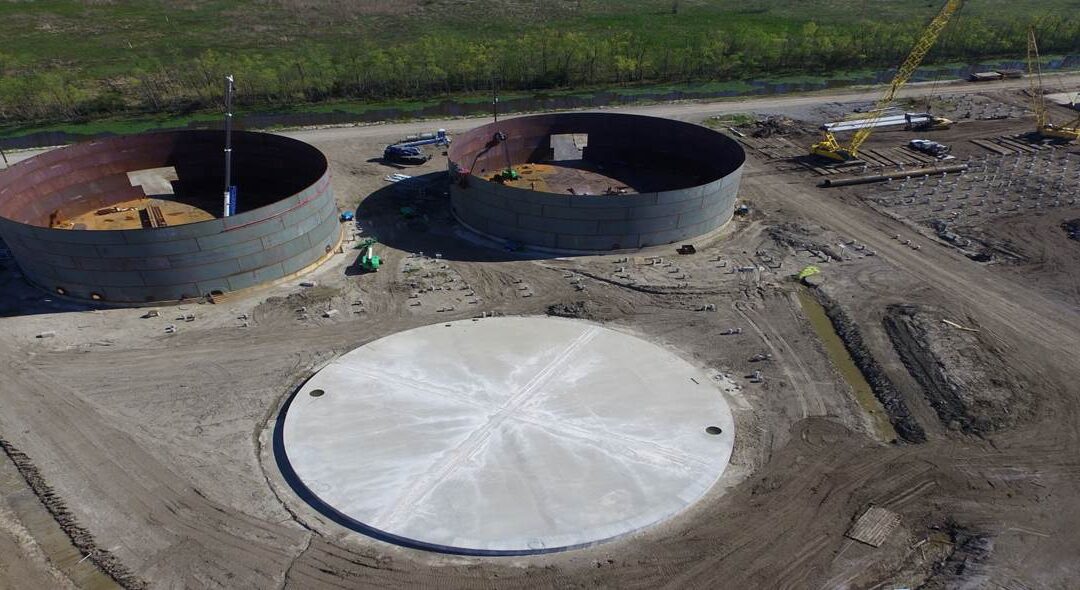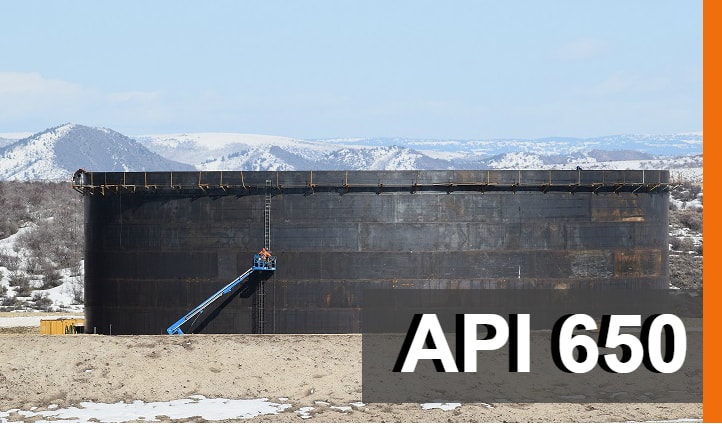Understanding the Significance of Welding Inspection in Quality Assurance Processes
Welding examination is a crucial part of quality control in construction and production. It ensures that welds conform with recognized standards, which is crucial for architectural stability. Different evaluation techniques, from aesthetic to ultrasonic screening, help recognize problems early. This proactive approach not just avoids costly repairs yet likewise enhances safety and security. Comprehending the nuances of welding examination can expose its broader effects for market conformity and online reputation. API 650 Welding Inspection. What lies beneath the surface area of these practices?
The Function of Welding Inspection in Top Quality Assurance
While welding is an essential process in numerous industries, its top quality and integrity pivot significantly on efficient examination methods. Welding inspection offers as a safeguard, ensuring that welds meet established standards and specifications. This procedure not only recognizes problems yet also examines the general workmanship, consequently adding to the safety and security and longevity of bonded structures. Examinations are integral to quality control, as they aid preserve and prevent costly failures compliance with industry regulations. By employing experienced assessors, organizations can improve their operational efficiency and support their credibilities. Additionally, the understandings acquired from assessments can inform constant enhancement, bring about better methods and training for welders. Inevitably, welding examination acts as an essential link in the quality control chain, guaranteeing that every joint is trustworthy and qualified of enduring the rigors of its intended application. This persistance is essential for the honesty of framework and the safety and security of end individuals.
Sorts Of Welding Inspections
Welding evaluations encompass a range of approaches created to examine the high quality and integrity of welds. These examinations are essential in ensuring compliance with sector requirements and specs. Common kinds of welding assessments include aesthetic assessment, which permits prompt recognition of surface abnormalities; ultrasonic testing, which makes use of high-frequency audio waves to spot internal problems; and radiographic testing, using X-rays or gamma rays to reveal weld honesty below the surface area (API 650 Welding Inspection). Furthermore, magnetic particle testing is made use of to identify surface area and near-surface interruptions in ferromagnetic materials, while color penetrant testing uses a method for exposing surface-breaking defects. Each sort of inspection offers a specific function, adding to the overall top quality assurance procedure. By using a combination of these strategies, inspectors can supply an extensive analysis of welding high quality, inevitably guaranteeing the safety and security and reliability of welded frameworks
Common Flaws Detected in Welding
A range of usual defects can happen throughout the welding procedure, impacting the stability and efficiency of welded structures. These defects include porosity, which entails trapped gas pockets within the weld, deteriorating its toughness. Cracks may likewise create as a result of rapid cooling or incorrect joint style, bring about potential failure under anxiety. Insufficient blend takes place when there wants melting of the base metal, leading to weak bonds. One more problem, damaging, includes the elimination of base steel along the weld side, developing a substantial structural weakness. Additionally, excessive spatter can impact the appearance and require additional cleaning or fixing. Imbalance can lead to unequal weld beads, compromising the overall quality. Identifying these defects early through correct inspection strategies is important to guarantee the reliability and safety of bonded elements, ultimately protecting the efficiency of the whole structure.

Advantages of Routine Welding Inspections
Routine inspections play a substantial role in keeping the high quality and safety and security of welded frameworks, particularly taking into account the common issues previously detailed. These inspections supply an opportunity to determine and fix issues prior to they rise into severe troubles, guaranteeing architectural honesty. By discovering imperfections early, organizations can lessen repair work prices and avoid possible task hold-ups.
In addition, routine welding examinations improve conformity with sector standards and guidelines, cultivating trust among stakeholders. This adherence not only secures the firm's reputation however likewise adds to boosted safety and security for personnel and the public.
Furthermore, regular examinations facilitate better training and skill development for welders, as feedback from evaluations can direct enhancements. Eventually, the benefits of regular welding inspections extend past prompt top quality guarantee, advertising lasting operational efficiency and reliability in welded frameworks.
Ideal Practices for Effective Welding Examination
Executing best techniques in welding assessment is vital for ensuring the highest standards of top quality and security. Assessors should be properly educated Visit Your URL and certified, having a comprehensive understanding of welding strategies and materials. Making use of advanced examination innovations, such as ultrasonic screening and radiography, enhances the discovery of issues that may not show up to the naked eye. Developing a clear inspection strategy, detailing the requirements and regularity of inspections, assurances uniformity and thoroughness.

Recording all searchings for carefully is crucial for traceability and accountability. Routine calibration of examination tools assures accuracy, while maintaining a well organized and tidy workspace decreases the danger of contamination. In addition, fostering open communication among staff member promotes the sharing of insights and promotes a culture of quality. By adhering to these best methods, organizations can significantly enhance their welding top quality guarantee procedures, inevitably leading to safer and much more trusted products.

Regularly Asked Concerns
What Credentials Are Required for a Welding Examiner?
A welding examiner generally requires qualification from identified organizations, such as the American Welding Society (AWS) or the International Institute of Welding (IIW), in addition to appropriate experience and understanding in welding processes and top quality requirements.
How Often Should Welding Inspections Be Executed?
Welding examinations ought to be performed consistently, normally at various task stages, consisting of before, throughout, and after welding processes - API 650 Welding Inspection. The regularity frequently relies on job requirements, regulative needs, and the complexity of the welds entailed
What Are the Costs Related To Welding Evaluations?
The expenses associated with welding assessments differ commonly, usually ranging from a couple of hundred to several find out here now thousand dollars, relying on factors like assessment kind, project dimension, and area, affecting total project budget plans and timelines.
Can Welding Inspections Be Performed Remotely?
Yes, welding assessments can be conducted from another location making use of advanced innovations such as drones, electronic cameras, and ultrasonic testing. These methods enable assessors to assess weld stability without being literally existing, boosting efficiency and safety in different environments.
How Do Evaluation Outcomes Influence Task Timelines?
Inspection results can greatly affect project timelines by i thought about this determining issues early, leading to required rework or adjustments. Delays may occur if inspections reveal issues requiring resolution, ultimately affecting total task conclusion and spending plan adherence.
Welding examinations incorporate an array of techniques created to examine the high quality and stability of welds. Common types of welding inspections include aesthetic examination, which permits for prompt recognition of surface irregularities; ultrasonic screening, which makes use of high-frequency audio waves to identify inner imperfections; and radiographic screening, using X-rays or gamma rays to disclose weld integrity under the surface. Constant evaluations help with better training and ability advancement for welders, as feedback from inspections can lead enhancements. Executing best techniques in welding assessment is vital for ensuring the highest possible requirements of quality and safety and security. Welding assessments ought to be executed regularly, commonly at different project phases, including prior to, during, and after welding procedures.